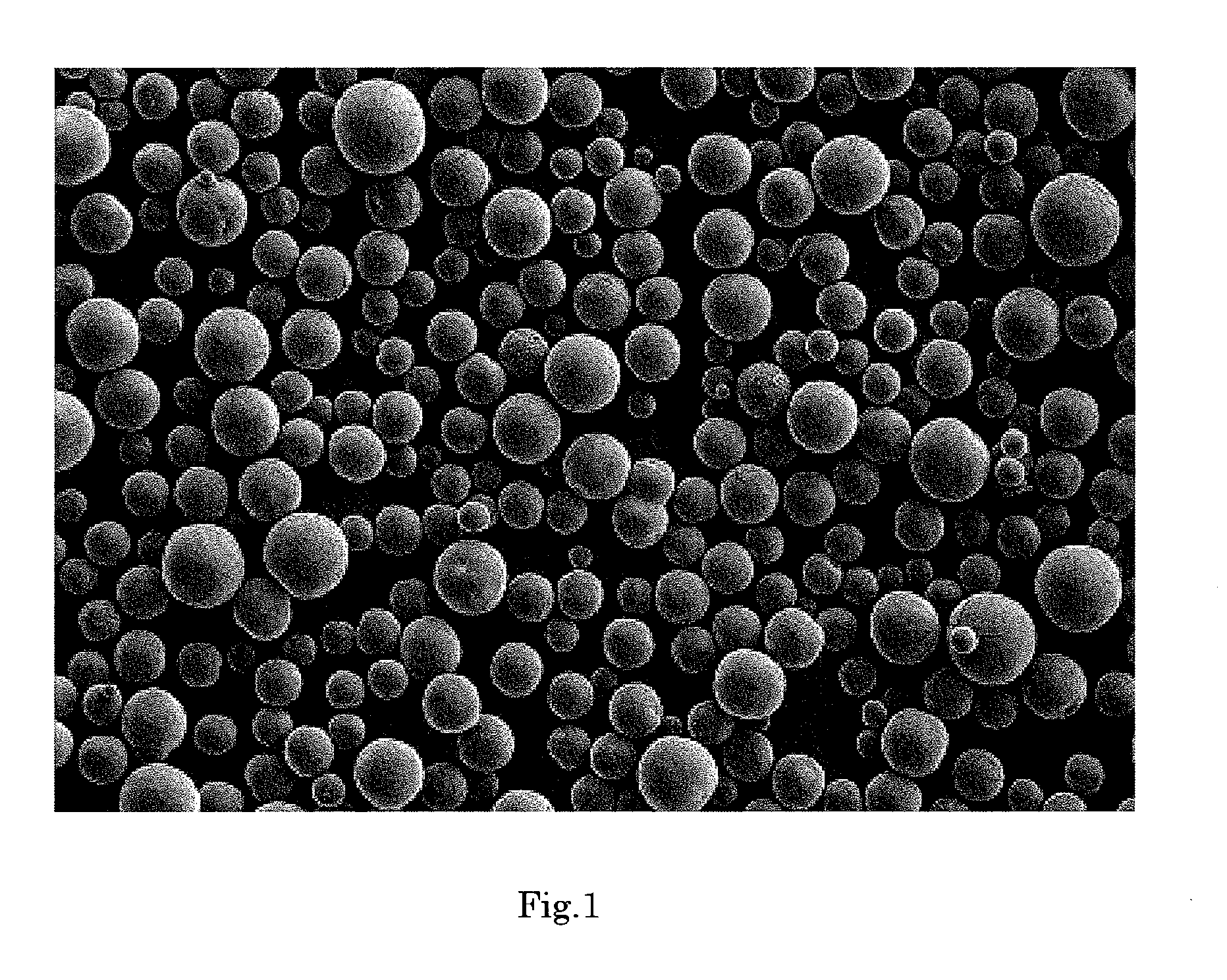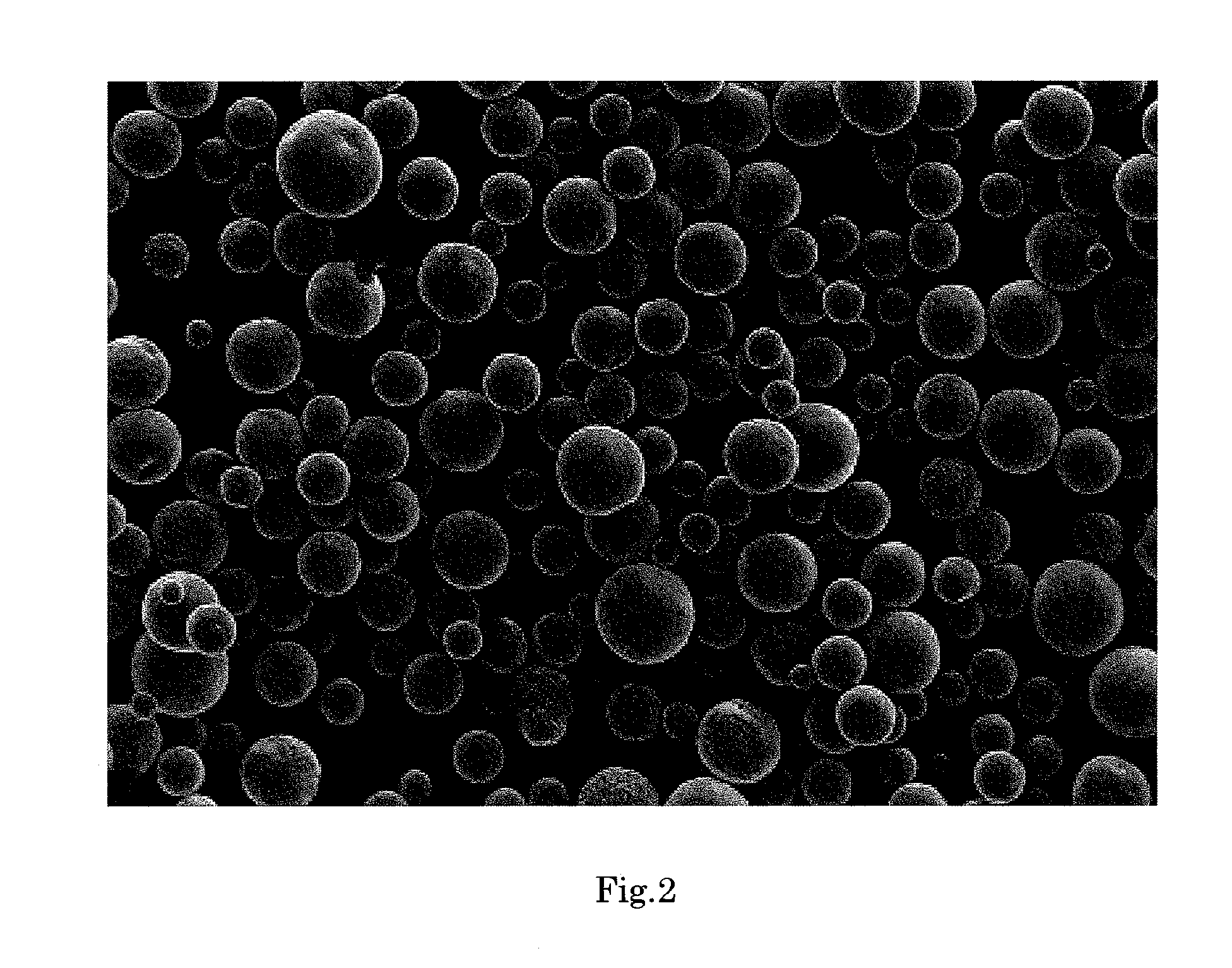Silica composite, method for producing the same, and method for producing propylene using the silica composite
a technology of silica and composites, applied in the field of silica composites, can solve the problems of reducing catalyst performance and catalyst performance, and achieve the effects of less corrosion of stainless steel, favorable shape, and excellent properties
- Summary
- Abstract
- Description
- Claims
- Application Information
AI Technical Summary
Benefits of technology
Problems solved by technology
Method used
Image
Examples
example 1
[0164]A raw material mixture was prepared as follows (step (a)):
[0165]300 g of ZSM-5 (SiO2 / Al2O3 ratio (by mol)=27) was added to 2000 g of colloidal silica (manufactured by Nalco Company, trade name “Nalco 2326”, silica particle size: 5 nm, silica content: 15% by mass, pH=9) while it was stirred. 40 g of an aqueous solution containing 61% by mass of nitric acid (manufactured by Wako Pure Chemical Industries, Ltd., special-grade reagent) was added thereto to adjust the pH to 1.0. Then, 100 g of ammonium nitrate (manufactured by Wako Pure Chemical Industries, Ltd., special-grade reagent) was added thereto as a processing aid. This raw material mixture was stirred at 25° C. for 2 hours.
[0166]The raw material mixture was spray-dried using a spray dryer (manufactured by OHKAWARA KAKOHKI Co., Ltd., model: “OC-16”) to obtain a dried product (step (b)). The spraying was performed using a disc-type atomizer at hot-air inlet and outlet temperatures of 230° C. and 130° C., respectively.
[0167]P...
example 2
[0175]A silica composite was produced in the same way as in Example 1 except that: the colloidal silica was changed to 882 g of trade name “Nalco DVZSN006” manufactured by Nalco Company (silica particle size: 12 nm, silica content: 34% by mass, pH=9); the zeolite was changed to 300 g of ZSM-5 (SiO2 / Al2O3 ratio (by mol)=480); and the phosphorus source was changed to 3.1 g of diammonium hydrogen phosphate.
[0176]Analysis and reaction results of the obtained silica composite are shown in Table 1.
[0177]FIG. 2 shows an electron micrograph of the silica composite obtained in Example 2 (magnification: 150 times). As is evident from FIG. 2, the silica composite was in the form of spherical particles having smooth surface.
[0178]FIG. 5 shows a micrograph of a SUS304 specimen after corrosion test using the silica composite of Example 2 (magnification: 120 times). As is evident from FIG. 5, the specimen after the test did not corrode.
example 3
[0179]A silica composite was produced in the same way as in Example 1 except that: the zeolite was changed to 300 g of ZSM-5 (SiO2 / Al2O3 ratio (by mol)=50); and the phosphorus source was changed to 26.7 g of ammonium dihydrogen phosphate (manufactured by Wako Pure Chemical Industries, Ltd., special-grade reagent, solubility in 100 g of water: 22.7 g (0° C.)).
[0180]Analysis and reaction results of the obtained silica composite are shown in Table 1.
PUM
| Property | Measurement | Unit |
|---|---|---|
| particle size | aaaaa | aaaaa |
| pore size | aaaaa | aaaaa |
| angle | aaaaa | aaaaa |
Abstract
Description
Claims
Application Information
 Login to View More
Login to View More - R&D
- Intellectual Property
- Life Sciences
- Materials
- Tech Scout
- Unparalleled Data Quality
- Higher Quality Content
- 60% Fewer Hallucinations
Browse by: Latest US Patents, China's latest patents, Technical Efficacy Thesaurus, Application Domain, Technology Topic, Popular Technical Reports.
© 2025 PatSnap. All rights reserved.Legal|Privacy policy|Modern Slavery Act Transparency Statement|Sitemap|About US| Contact US: help@patsnap.com



